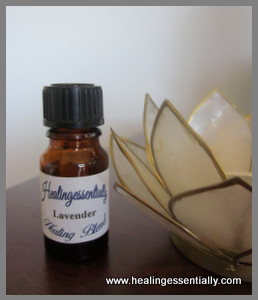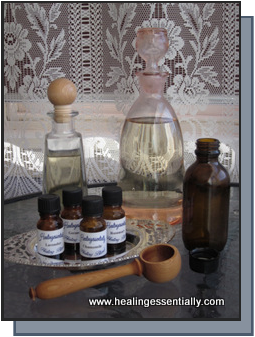Skin Care - What is Skin and How to Take Care of It
The skin is the largest organ of the body and skin care is something most people ignore or go about it the wrong way. The whole skin of an average adult is about 2 square metres and weighs about 3 kgs. Within the small space of 3 centimetres there are 17 metres of blood vessels, 94 sebaceous glands, 19,000 nerve endings, 1250 pain receptors and roughly 60 hairs. The skin is the largest toxin waste removal zone of the body. It eliminates about one third of all our waste products. Regular skin care is vital for our health.
What is Skin?
The Layers:
The layers of the skin are the dermis and epidermis. The thin upper layer is the epidermis and beneath this is the dermis, measuring about 2 millimetres thick. Below this is the fat layer.
The Epidermis
New cells are produced roughly every 20 daysin the epidermis and move upwards towards the surface of the skin.
When these cells die they produce a waterproof layer which acts as a protection against harmful intrusions and seals in moisture and fluids. Thistopmost layer is the keratin layer.
These dead cells are regularly sloughed off and a new layer of dead cells replaces them.The epidermis also holds the pigmentation – the more pigmentation the darker the skin.
The Dermis
The dermis layer is the layer which gives the skin its strength, stretch and mobility.The dermis is the layer which holds the nerve endings, hair follicles, glands and blood vessels.
The nerve endings lodged here in the dermis tell the brain if the body is receiving pain, when we are touched, what climatic changes we are being subjected to, any pressure being felt and any damage being done.
How Does Skin Work?
The sebaceous glands produce oil which lubricates and
protects the skin and keeps it supple.
The blood vessels feed the living cells contained in the dermis and epidermis. However, the top most cells, the dead ones, only need water.
The amount of water retained shapes the face and determines the quality and texture of the skin.
All the elements which make up these layers communicate with each other and the brain:
- To protect and nourish the skin,
- Inform the system of outside influences and actual harm done to the body,
- Help regulate temperature and
- Elimination of toxic waste
The skin is constantly renewing itself and it takes about 30 days for a cell to progress through its life span from formation to being sloughed off the surface, once dead.
Ph Balance of The Skin
The balance between acid and alkaline is the PH of the skin.
For a healthy, glowing skin we need to have a balanced Ph and commercial cosmetics are mostly alkaline which upsets that delicate balance.
Essential oils are neutral ie they are between 6.5 – 7 value.
What Does The Skin Need?
Because it is the largest and most visible organ of the body the skin requires maintenance and care.
This is possible by using natural products, eating wholesome organic food, drinking plenty of water and taking regular exercise in the fresh air.
Skin care is important. Our skin is a barometer of our health. It is the first organ to show visible signs of a poor diet, mineral and vitamin deficiencies and poor waste elimination. A glowing skin is attractive and shows a healthy body.
Skin Care:How to Take Care of Our Skin
Cleansing
Skin care by regular cleansing is important and involves using the essential oil cleanser of your skin type to remove dead skin cells, any accumulated dust particles, chemicals or pollutants from the air.
Skin care cleansing should be done at least once a day, preferably at night and if possible in the morning as well.
Using the appropriate cleanser apply to your face and neck and massage gently in an upwards motion using circular strokes.
Then wash with warm water to remove the cleanser and pat dry.
Toning
This skin care method is used to remove the residual cleanser and restore PH balance to the skin.
Toners use various levels of astringent ingredients like vinegar, alcohol, witch hazel or perhaps a purified water base depending on whether you want a basic toner or an astringent.
Use the essential oils to suit your skin type and apply using a cotton wool ball or tissue.
Also apply in an upward massage motion. Leave as is and follow with the moisturising.
Toners can be used for pre and after shave.
Moisturising
A moisturiser is necessary for all types of skin.
Its sole purpose is to prevent loss of water – dehydration. Without water our skin is dry, scaly, prone to wrinkles and vulnerable to infections in clogged pores.
Water re-hydrates the layers and gives the skin its healthy glow. Skin care without the final moisturising is useless as the moisture is what gives our skin its shape and form.
Dry Brushing
We are constantly eliminating waste through the sweat glands of our skin. We need to help rid the skin of this waste or it will just clog up our pores causing more problems – a vicious circle.
So before showering use a loofah or natural bristle brush and gently work your way over the entire body, but avoid the more sensitive areas like the breasts and face.
Dry brushing is a form of skin care which is generally not common practice but one recommended for overall health of the skin.
Facial Steaming
The steam causes the pores to open and allows the perspiration to deeply cleanse the skin. This is a very good skin care procedure.
The opening of the pores also allows the better absorption of the essential oils to boost the healing and/or regeneration of cells.
It improves circulation so more nutrients and moisture is brought to the upper layers of the skin and enables removal of the wastes.
This is a great way to give a healthy glow to your skin and, another great benefit, it’s cheap and very easy to do.
If you do this regularly you will certainly notice a change in your skin’s quality and feel. People will comment on how good you look (they may even say how young you look!).
Use the Inhalation via vapour method.


